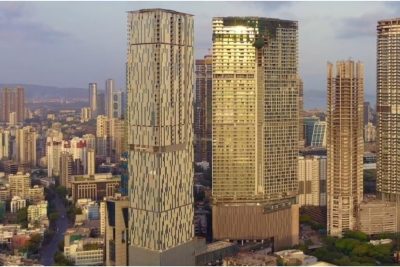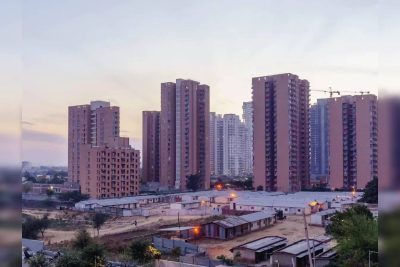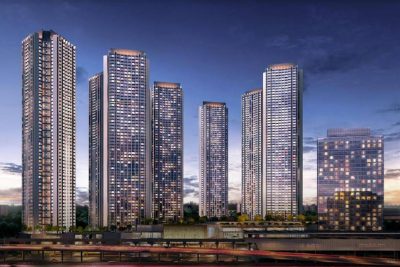Indian real-estate went through some turbulent times for two years from 2020, but 2022 was a year of recovery and growth across demand, supply, sales, prices and even capital investments in the sector. The recovery of the sector was fuelled by reduced pandemic-induced uncertainties, which boosted transaction activity and increased capital investments. According to reports, the Indian construction market size was valued at $609.6 billion in 2021 and is projected to achieve an Average Annual Growth Rate (AAGR) of more than 6% during 2023-2026. Further, the India Brand Equity Foundation (IBEF) has estimated that the Indian real estate market will be valued at $1 trillion by 2030 and contribute around 13% to India’s GDP by 2025 .
As hybrid working models solidified with the ‘new normal,’ the demand for residential properties increased across tier 1 and 2 cities as many families sought to purchase their own homes as a safety net. According to Magicbricks’ Research, at the end of 2022 the residential demand in the top 8 Indian cities is expected to show over 15% YOY growth reflecting the resilience of residential markets.
While residential demand is the main driver of the Indian real estate industry, other asset classes such as commercial offices, industrial & warehousing sheds, retail and hospitality are also contributing to the real estate sector and will continue to do so in the coming year. Further, Smart Cities Mission and other government initiatives are playing a pivotal role in making cities more liveable and encouraging buyers, occupiers and investors to pay more attention to sustainability and overall well being.
2023 presents an opportunity for real estate to continue on a path of disruption and innovation led by technology, especially in construction and customers’ journeys from shortlisting to purchasing a property, and beyond. Some major trends to watch out for in 2023 are
*Preference towards bigger homes, gated communities
The customer demand has changed significantly towards larger home configurations and independent homes, especially 3 and 4BHK units as needs have evolved. Magicbricks Research has observed increasing preference towards 3BHK and above configurations across cities including Bengaluru (62% of the total demand), Chennai (51% of total demand), Delhi (63% of total demand) and Hyderabad (56% of the total demand) between July and September 2022 . This is expected to continue as most households want an extra multipurpose room for various needs. Preference towards gated communities is expected to continue in 2023 as they evolve into self-sustaining ecosystems with better amenities and safety offerings that focus on health and sustainability.
*Digital interventions in buy, sell, rent journey
Since real-estate investments are high involvement and big ticket, traditionally buyers would visit all properties in person to shortlist. However, as the number of options available to customers is increasing, buyers are finding it difficult to visit all sites, and fast adopting digital tools for decision making. Buyers are now searching and consulting a range of online sources for nuanced decision making that covers topics such as city, location, type of property to buy, size, layouts, amenities, comparables, etc. This has spurred digital interventions across the customer journey, especially with video and audio content that include project and locality reviews, virtual tours and walkthroughs, 3D modeling, 3D staging and real-time online construction updates. This digitalization is expected to gather further pace and become an important tool in the arsenal of developers, landlords and intermediaries in attracting buyers and tenants.
Improvements in infrastructure, quality and choice of properties, liveability index and employment opportunities have brought attention to emerging real estate markets, making Tier 2 cities buoyant and competitive in 2023. Government initiatives (Make in India, AMRUT and Smart Cities Mission), improvements in ease of doing business, investments by Indian and Foreign MNCs, availability of land and industrial growth have made Bhubaneswar, Chandigarh, Coimbatore, Indore, Jaipur, Lucknow and Nagpur some of the cities to watch out for in the coming year. Magicbricks Research shows that Nagpur witnessed a 49% YoY increase in residential demand in Q3’2022. Similarly, in Coimbatore, the residential demand increased 27% YoY. Given that many businesses saw a higher growth in demand in the tier 2 & 3 cities compared to tier 1 cities, investments in real estate infrastructure – offices, malls, warehouses, industrial parks and gated housing projects is expected to continue an upward trend in these cities.
*Commercial assets gaining prominence
In the case of commercial real estate assets, demand for offices, retail, industrial and warehousing spaces is largely expected to maintain an upward trajectory in 2023 as the Indian economy grows at one of the highest rates globally. There is also growing interest and keenness in Real Estate Investment Trusts (REITs), which offer small ticket size investments in leased assets coupled with ease of entry and exit, similar to investing in shares. Currently, there are three listed REITs offering commercial office projects as the underlying assets and in 2023 we can expect the listing of a fourth, which will be the first to offer malls as the underlying assets. Further, individual investors will continue to explore options of investing in shops and warehouses whilst institutional investors will consider investing in large parks offering industrial, warehousing and data center facilities.
While the outlook is promising, the growth of the Indian real estate sector will depend on initiatives and measures announced in the upcoming Union Budget, movement of mortgage rates, performance of job markets and overall economic scenario.




